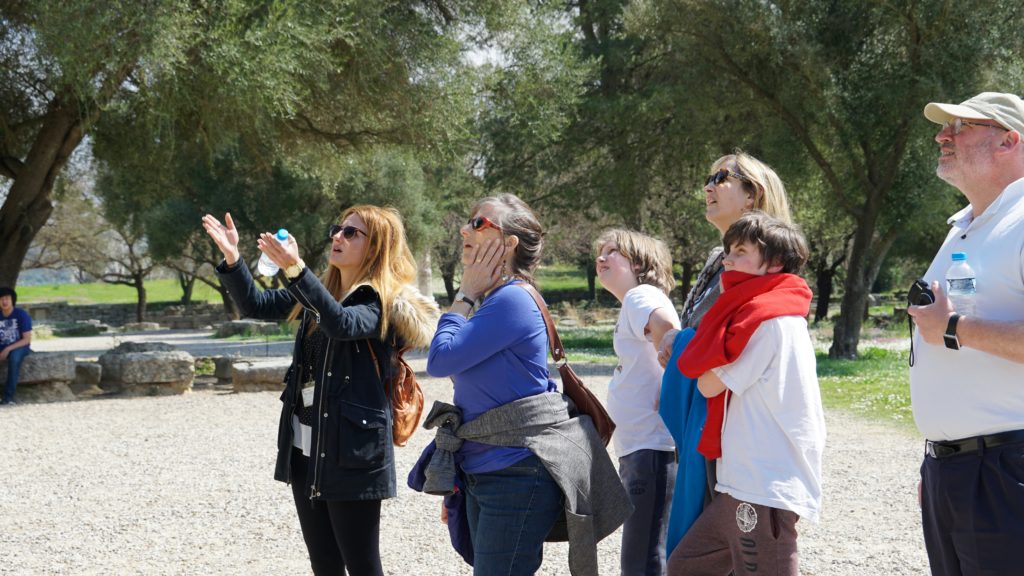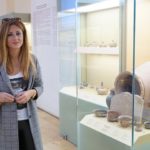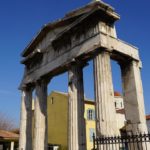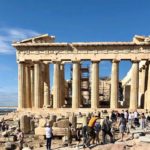5 Hours
Private Tour
English
Up to 15 Guests
Athens Walking Private Tour – Licensed Tour Guide
Got a Question?
Contact UsHighlights
Athens Guide Walking private tour
- Acropolis – Propylaea – Parthenon – Erechtheion – Temple of Athena Nike
- Theater of Dionysus
- Herod Atticus Odeon
- Acropolis Museum
- Plaka
- Monastiraki
Itinerary
This tour starts with a visit to the sacred hill of Acropolis. Passing through it’s monuments (the Odeon of Herods Atticus, the temple of Athena Nike, the monumental Prolylaea and the Erechtheion) we will end up in front of the Parthenon and enjoy a breathtaking view of the city. Next we will follow the pedestrian street in front of the Acropolis and visit the famous New Acropolis Museum. After the visit we will walk through Plaka, the old neighborhood of Athens clusted around the Acropolis hill full of little shops and family run restaurants, and end up at Monastiraki square – the place for Bargain hunters and antique lovers. This is where the tour ends. A perfect location to enjoy an authentic Greek lunch and maybe later continue your walk to Ancient Greek Agora and the flea market of Athens.
Inclusions - Exclusions
Private Tours are personal and flexible just for you and your party.
Inclusions:
- Licensed Tour Guide
-
Skip the line Tickets [Acropolis & Acropolis Museum]
- Bottled water
Exclusions:
- Personal Expenses
Entrance Fees
ADMISSION FEES FOR SITES:
Included in the price:
Ticket for: Acropolis of Athens, & Acropolis Museum
Summer Period: (1 April – 31 October)
Acropolis of Athens: (08:00am- 20:00pm)
Winter Period:(1 November – 31 March)
Acropolis of Athens: (08:00am- 17:00pm)
Free admission days:
- 6 March (in memory of Melina Mercouri)
- 18 April (International Monuments Day)
- 18 May (International Museums Day)
- The last weekend of September annually (European Heritage Days)
- Every first and third Sunday from November 1st to March 31st
- 28 October
Holidays:
- 1 January: closed
- 25 March: closed
- 1 May: closed
- Easter Sunday: closed
- 25 December: closed
- 26 December: closed
Free admission for:
- Children & young people up to the age of 25 from EU Member- States
- Children & young people from up to the age of 18 from Non- European Union countries
- Persons over 25 years, being in secondary education & vocational schools from EU Member- States
- Escorting teachers during the visits of schools & institutions of Primary, Secondary & Tertiary education from EU Member- States
- People entitled to Social Solidarity income & members depending on them
- Persons with disabilities & one escort (only in the case of 67% disability)
- Refugees
- Official guests of the Greek State
- Members of ICOM & ICOMOS
- Members of societies & Associations of friends of State Museums & Archaeological sites
- Scientists licensed for photographing, studying, designing or publishing antiquities
- Journalists
- Holders of a 3- year Free Entry Pass
Reduced admission for:
- enior citizens over 65 from Greece or other EU member-states, during
the period from 1st of October to 31st of May - Parents accompanying primary education schools visits from EU Member- States
- Escorting teachers of educational visits of schools & institutions of primary, secondary & tertiary education from non European Union countries
Reduced & free entrance only upon presentation of the required documents
See all the information here:
https://www.culture.gov.gr/DocLib/Admission_Info_141222_new.pdf
Amenities for the physically challenged:
Elevator available for wheelchairs, people with diminished abilities and any parent attending two or more infants on her/his own. The elevator is located about 350 m. far from the main entrance of the archaeological site.
Users of the elevator should contact in advance for details and terms (+30 210 3214172).
The facility is not available during extreme weather conditions and strong winds.
History
Acropolis:
The Acropolis hill (acro – edge, polis – city), so-called the “Sacred Rock” of Athens, is the most important site of the city and constitutes one of the most recognizable monuments of the world. It is the most significant reference point of ancient Greek culture, as well as the symbol of the city of Athens itself as it represents the apogee of artistic development in the 5th century BCE. During Perikles’ Golden Age, ancient Greek civilization was represented in an ideal way on the hill and some of the architectural masterpieces of the period were erected on its ground.
Propylaea:
The Propylaea is the monumental entrances to the sacred area dedicated to Athena, the patron goddess of the city. Built by the architect Mnesicles with Pentelic marble, their design was avant-garde. To the south-west of the Propylaea, on a rampart protecting the main entrance to the Acropolis, is the Ionian temple of Apteros Nike or Wingless Victory.
Parthenon: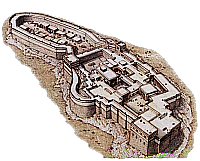
The Parthenon. It is the most important and characteristic monument of the ancient Greek civilization and still remains its international symbol. It was dedicated to Athena Parthenos (the Virgin), the patron goddess of Athens. It was built between 447 and 438 B.C.E. and its sculptural decoration was completed in 432 B.C.E. The construction of the monument was initiated by Perikles, the supervisor of the whole work was Pheidias, the famous Athenian sculptor, while Iktinos (or Ictinus) and Kallikrates (Callicrates) were the architects of the building. The temple is built in the Doric order and almost exclusively of Pentelic marble. It is peripheral, with eight columns on each of the narrow sides and seventeen columns on each of the long ones. The central part of the temple, called the cella, sheltered the famous chryselephantine cult statue of Athena, made by Pheidias. The rest of sculptural decoration, also by Phidias, was completed by 432 BCE. The sculptural decoration of the Parthenon is a unique combination of the Doric metopes and triglyphs on the entablature, and the Ionic frieze on the walls of the cella. The metopes depict the Gigantomachy on the east side, the Amazonomachy on the west, the Centauromachy on the south, and scenes from the Trojan War on the north. The Parthenon, the Doric temple, the pinnacle of Pericles’ building program, is beyond question the building most closely associated with the city of Athens, a true symbol of ancient Greek culture and its universal values.
The New Acropolis Museum:
As you enter the museum grounds, look through the plexiglass floor to see the ruins of an ancient Athenian neighborhood, which were artfully incorporated into the museum design after being uncovered during excavations. This dazzling modernist museum at the foot of the Acropolis’ southern slope showcases its surviving treasures still in Greek possession. While the collection covers the Archaic and Roman periods, the emphasis is on the Acropolis of the 5th century BCE, considered the apotheosis of Greece’s artistic achievement. The museum cleverly reveals layers of history, floating over ruins with the Acropolis visible above, showing the masterpieces in context. The surprisingly good-value restaurant has superb views (and reviews); there’s also a fine gift shop.
Ancient Agora:
In the heart of ancient Athens was the Agora, the lively, crowded focal point of administrative, commercial, political and social activity. Socrates talked about his philosophy here, and in AD 49 St Paul came here to speak on Christianity. The site was occupied without interruption throughout the city’s history. It was used as a residential and burial area as early as the Late Neolithic Period (3000 BCE) but it was first developed as a public site in the 6th century BC (the time of Solon). The Agora was devastated by the Persians in 480 B.C.E., but a new one was built in its place almost immediately. It was flourishing by Pericles’ time and continued to do so until AD 267 when it was destroyed by the Herulians (a Gothic tribe from Scandinavia). The Turks built a residential quarter on the site, but this was demolished by archaeologists after Independence and later excavated to classical and, in parts, Neolithic levels. The site today is a grand, refreshing break, with beautiful monuments and temples and a fascinating museum. The museum is housed in the Stoa of Attalos, and its exhibits are connected with the Athenian democracy. The collection of the museum includes clay, bronze and glass objects, sculptures, coins and inscriptions from the 7th to the 5th century B.C.E., as well as pottery of the Byzantine period and the Turkish occupation.
The Roman Agora:
The entrance to the Roman Agora is through the well-preserved Gate of Athena Archegetis, flanked by four Doric columns. It was financed by Julius Caesar and erected sometime during the 1st century AD. In it is the Tower of Winds. The well-preserved, extraordinary Tower of the Winds was built in the 1st century B.C.E. by a Syrian astronomer named Andronicus. The octagonal monument of Pentelic marble is an ingenious construction that functioned as a sundial, weather vane, water clock, and compass. Each side of the tower represents a point of the compass, with a relief of a floating figure representing the wind associated with that particular point. Beneath each of the reliefs are faint sundial markings. The weather vane, which disappeared long ago, was a bronze Triton that revolved on top of the tower. The Turks allowed dervishes to use the tower. The rest of the ruins are quite bare. To the right of the entrance are foundations of a 1st-century public latrine. In the southeast area are foundations of a propylon (fortified tower) and a row of shops.
Plaka – The Old Town:
Stroll through the streets of Plaka – the city’s Old Town. Sprawled over the side of Athens’ Acropolis, this historical neighborhood comprises a maze of cobbled streets lined with Neoclassical architecture, Byzantine churches, and busy independent shops. On the northernmost streets of Plaka is the area is known as Anafiotika — an idyllic cluster of whitewashed houses that are reminiscent of buildings in the Greek islands. Admire Anafiotika’s pretty Cycladic architecture, built by 19th-century workers who emigrated here from Anafi Island. It’s thought the workers were homesick for their native island life, so painted the buildings bright white to remind them of Anafi. Feel like an islander on the mainland.
Cancellation Policy

All cancellations must be confirmed by Olive Sea Travel.
Regarding the Day Tours:
Cancellations up to 4 days before your service date are 100% refundable.
Cancellation Policy:
- Licensed Tour Guides and Hotels are external co-operators & they have their own cancellation policy.
- Apart from the above cancellation limits, NO refunds will be made. If though, you fail to make your appointment for reasons that are out of your hands, that would be, in connection with the operation of your airline or cruise ship or strikes, extreme weather conditions or mechanical failure, you will be refunded 100% of the paid amount.
- If your cancellation date is over TWO (2) months away from your reservation date, It has been known for third-party providers such as credit card companies, PayPal, etc. to charge a levy fee usually somewhere between 2-4%.
- Olive Sea Travel reserves the right to cancel your booking at any time, when reasons beyond our control arise, such as strikes, prevailing weather conditions, mechanical failures, etc. occur. In this unfortunate case, you shall be immediately notified via the email address you used when making your reservation and your payment WILL be refunded 100%.

